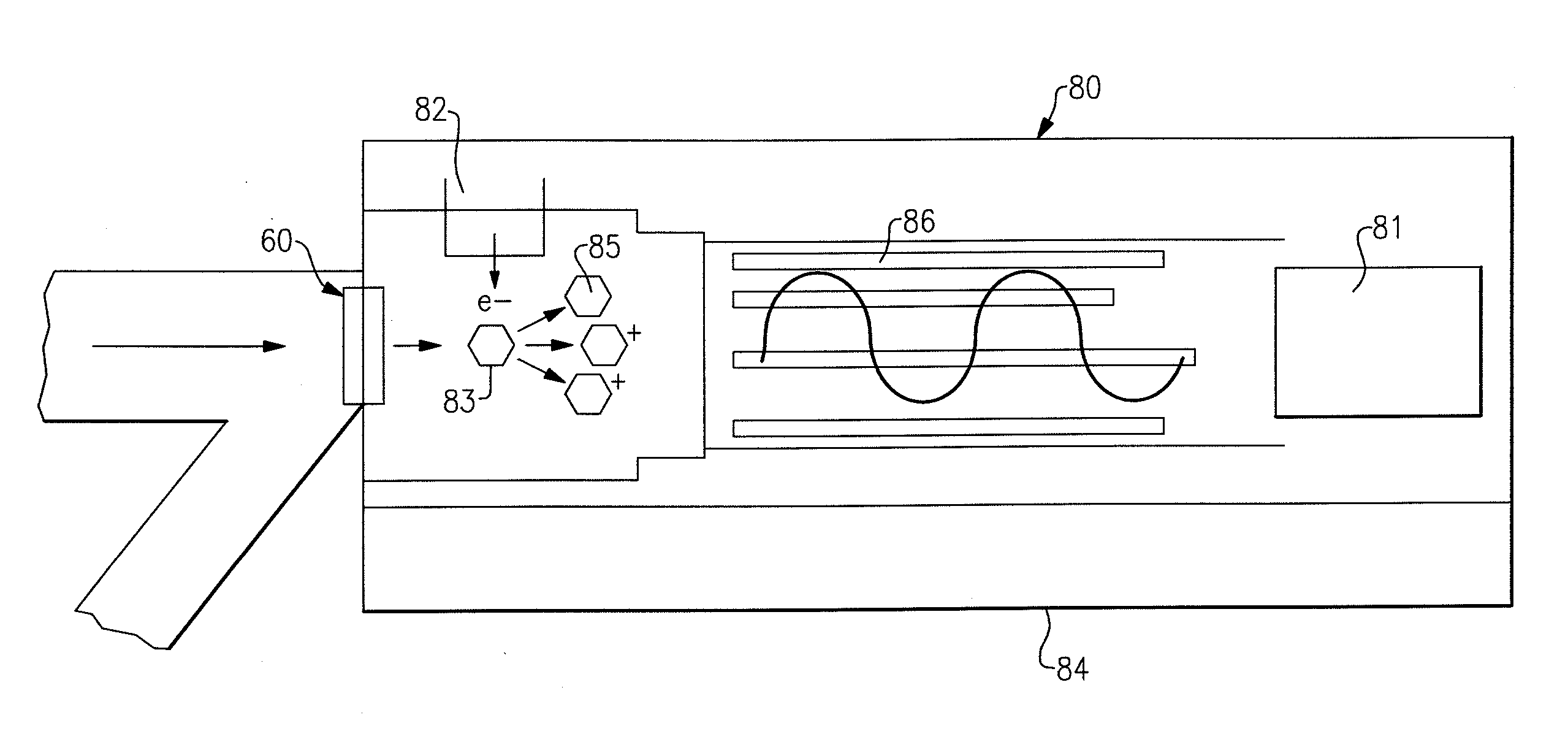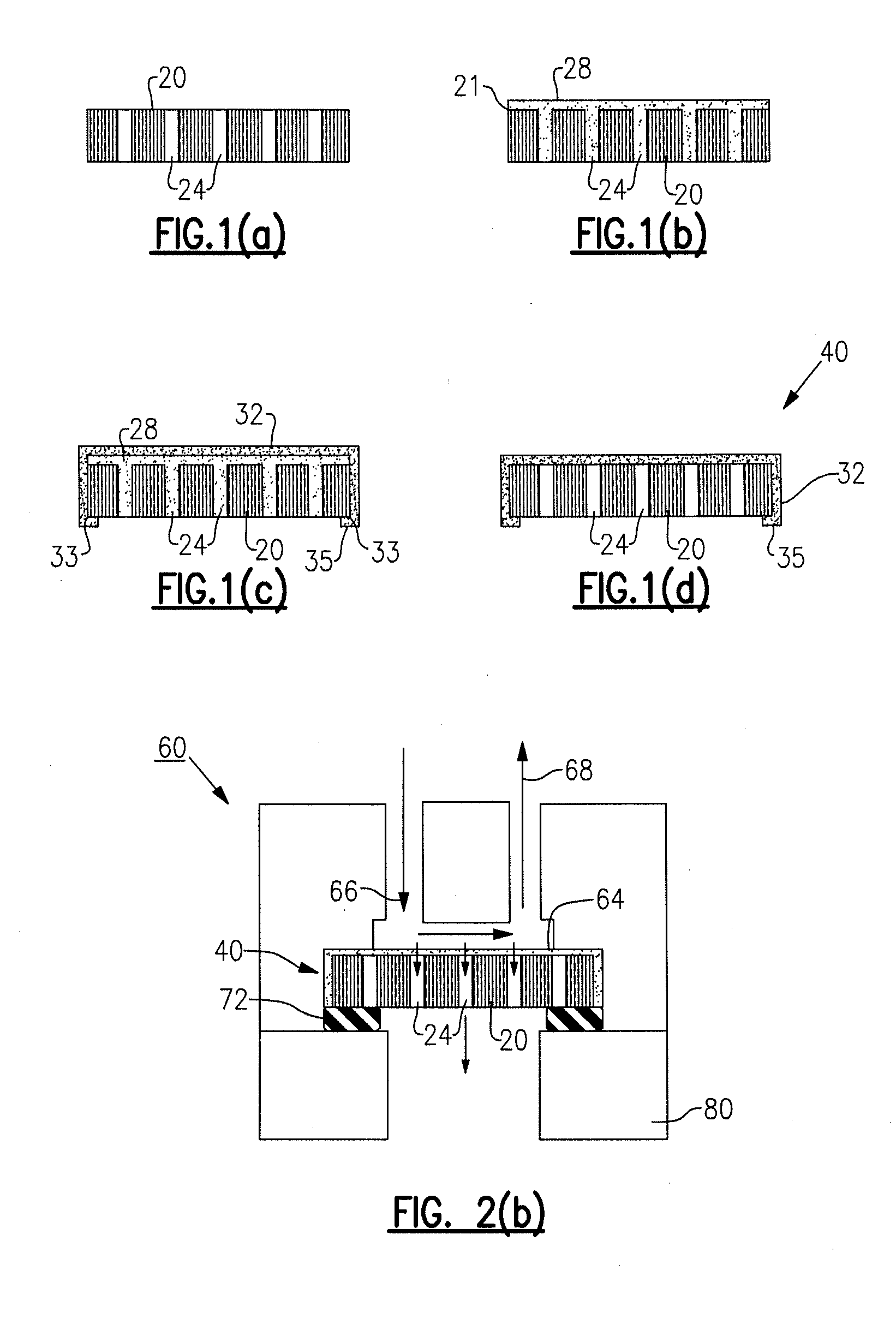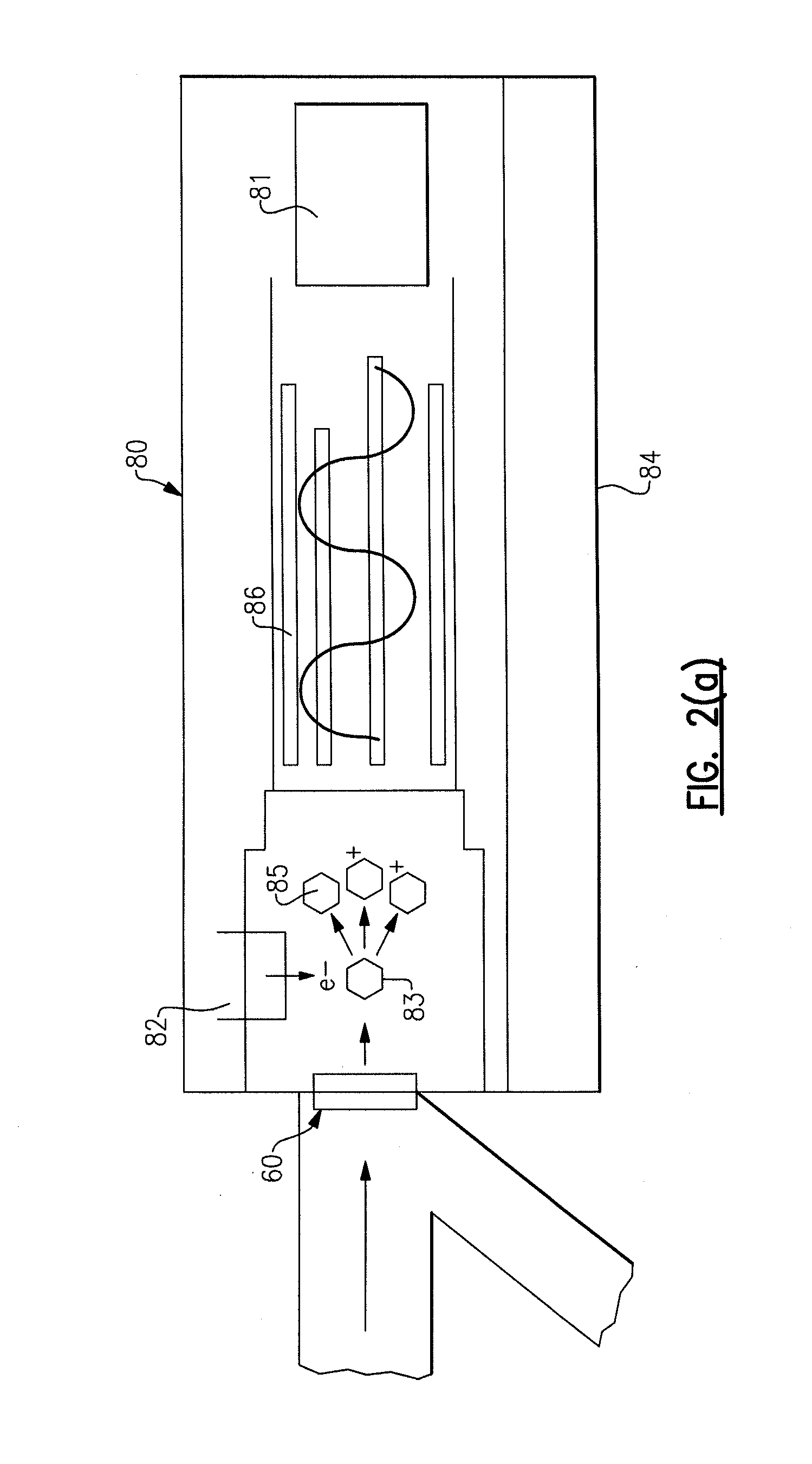Ultra-thin membrane for chemical analyzer and related method for forming membrane
a chemical analyzer and ultra-thin technology, applied in the field of analytical systems, can solve the problems of limited mims instruments, limited use of high temperature as the sole approach, and labile analytes to degrad
- Summary
- Abstract
- Description
- Claims
- Application Information
AI Technical Summary
Benefits of technology
Problems solved by technology
Method used
Image
Examples
Embodiment Construction
[0035]The following description relates to the formation of an ultra-thin membrane for applied use in membrane inlet mass spectrometry (MIMS) systems. It will be apparent from the following description that the membrane can be used suitably in other chemical analytical systems. Throughout the course of discussion, several terms such as “top”, “bottom” and the like are used in order to provide a suitable frame of reference in regard to the accompanying drawings. These terms are merely intended to provide clarity and are not intended to overly narrow the scope of the invention, including the claims, except where so specifically indicated.
[0036]Referring to FIG. 1(a), there is shown a porous substrate or support 20 having a plurality of pores 24. According to this specific version, the support 20 is a nano-porous substrate support such as those manufactured by Whatman Anodisc, a division of General Electric Healthcare. According to this specific embodiment, the substrate support 20 is ...
PUM
 Login to View More
Login to View More Abstract
Description
Claims
Application Information
 Login to View More
Login to View More - R&D
- Intellectual Property
- Life Sciences
- Materials
- Tech Scout
- Unparalleled Data Quality
- Higher Quality Content
- 60% Fewer Hallucinations
Browse by: Latest US Patents, China's latest patents, Technical Efficacy Thesaurus, Application Domain, Technology Topic, Popular Technical Reports.
© 2025 PatSnap. All rights reserved.Legal|Privacy policy|Modern Slavery Act Transparency Statement|Sitemap|About US| Contact US: help@patsnap.com



